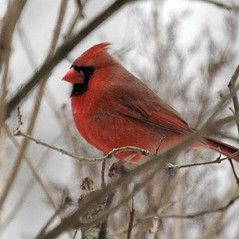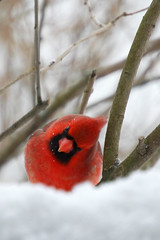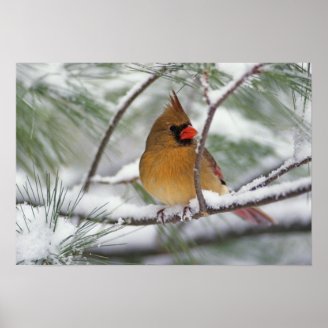It's delightful to be able to look out into our backyard on a cold, snowy winter day, and see the birds that have stayed around during these harsher months.
They're not as numerous or as vocal as they are during the warmer months, and there isn't as much variety, but they're a joy to watch, flitting around in the bushes, hopping around the ground, or visiting our bird feeders.
Our common winter birds add interest to an otherwise quiet, cold, and often cloudy winter day in our area.



























 Singer-Songwriter Ellis Performs From the Hearton 06/03/2013
Singer-Songwriter Ellis Performs From the Hearton 06/03/2013
 The Light-Weight SteriPen Water Purifier for Camping or Travelon 01/18/2015
The Light-Weight SteriPen Water Purifier for Camping or Travelon 01/18/2015
 Inexpensive Gift Ideas For Coffee Loverson 11/28/2014
Inexpensive Gift Ideas For Coffee Loverson 11/28/2014
 Very Simple Cranberry Sauceon 11/26/2014
Very Simple Cranberry Sauceon 11/26/2014



Are You a Winter Birder? What Birds Do You See Most Often in the Winter?
I love birds, just put out all my seasonal bird feeders. I'm an avid at home bird watcher, it's amazing what types of birds you can attract to your home. Great Wizz!
This is a beautiful piece of writing - I love reading about birds - especially in the winter. This is the first time I have made it to Wizzley I think, if this an example of the quality I will come back. :)
Very interesting and informative article! I love to watch and identify birds and this is especially fun in winter when they come to the feeder.
I enjoyed reading this article because it is interesting for me to see which of the birds you mention I notice around my area (I'm from Germany) as well. I'm familiar with the chickadee but not the black-capped one - it looks quite similar to ours though. I also know the sparrow and the nut-hatch.
It would be a treat to see a Northern Cardinal, a white-breasted nuthatch or the American goldfinch in its summer yellow - what beautiful birds!
I had been wondering why I had not seen Goldfinches at my feeder. I only saw drab sparrow like birds. Thanks for letting me know what to look for Now I am pretty sure that my Goldfinches are still coming but in their winter plumage.
Thanks for your comment, Brenda. The cardinal is a favorite of mine too. I didn't know it was the Kentucky state bird -- it's a good choice!
I moved from CA to KY six years ago. I just love all the beautiful birds. The Northern Cardinal is my favorite all and the KY state bird. I have to keep my cats in the house when spring starts up so they don't kill them. They're staying in right now because it's too cold for them outside.
It's great to hear what you see in the western part of N.A., sheilamarie. I don't get out west often, and I'd love to see more hummingbirds, golden eagles, stellar jays, etc.
Since I've moved from eastern N.A. to western, I enjoy a different group of birds now than I used to see. I must admit there is a greater variety of songbirds in the east and I do miss so many of them (the cardinal, the goldfinch, the bobolink, the red winged blackbird, I could go on!) What we see here, though, are pretty wonderful too. We have more woodpeckers and hummingbirds (in warmer weather) and several birds of prey, like the bald eagle, the golden eagle, and the osprey. We also see grouse that beat their wings on the ground, wild turkeys (which we also saw in Vermont). And I can't forget the ravens and the stellar jays! Both of these birds are quite cheeky. There are amazing birds here, too, but they aren't as plentiful, probably because of the kinds of vegetation. Now that it's winter, there are even fewer birds.
Thanks for your comments, Lindsey, and Deepak!
Honestly I really don't like birds as I am annoyed when it chirps...But looking on these lovely birds, I might disregard the noise it makes.